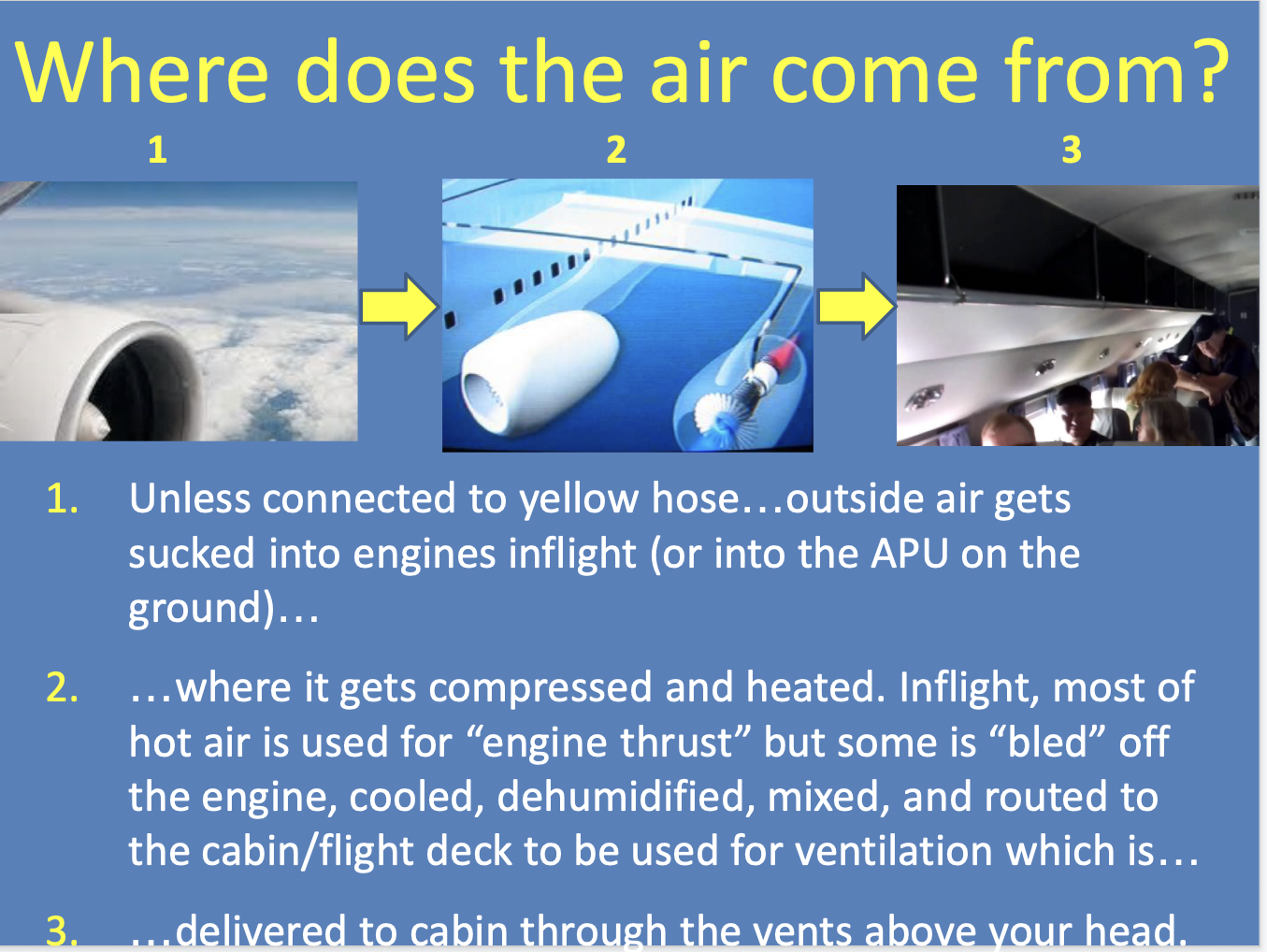Fumes
Odorous chemicals in the air (not visible); at times unpleasant, but other times can make you sick. Even though there may not be any visible haze or smoke BE AWARE! Fumes can contain carbon monoxide which can cause headaches, dizziness, fatigue, nausea, etc.
Engine oil fumes are often described as smelling like dirty socks, musty/moldy, and/or wet dog. Hydraulic fumes typically smell acrid.
IF YOU BREATHE FUMES ON BOARD: Identify where the smell is coming from: air vents or an item from the cabin.
IF IT IS COMING FROM THE VENTS: Call the flight deck
1.) describe the smell
2.) Where do you smell it in the cabin
3.) Time the smell started
4.) If you or anyone are having symptoms
TAKE OXYGEN IF YOU HAVE SYMPTOMS
REPORT to your supervisor if the event made you sick and seek medical attention immediately
DOCUMENT what happened by filling out a CERs report and notify trisha.brown@afaeagle.com. Keep a log of symptoms and any other communications.
Fumes detective – clues to notice
WHERE are fumes coming from?
WHEN is an oil fume event most likely?
Most likely during engine power setting change -- engine/APU start, takeoff/climb.
Oil fumes unlikely to start during cruise, but can start earlier and persist during cruise.
Top of descent is another classic time for oil to contaminate the system because that’s when the high pressure release valve is opened and any oil that accumulated behind that closed valve during the flight gets released into the system.
WHEN is hydraulic event most likely?
Most likely start during ground ops. Fumes that start on the ground can persist or sometimes worsen inflight: APU sucks in HF on the ground, HF in ducting, engines supply hotter bleed air to the ducts inflight, air heats contaminated ducting, generating more fumes. Rare that engine is source of hydraulic fumes, so unlikely to start during cruise…
WHAT do fumes usually smell like?
Engine oil fumes: Dirty socks, Musty/moldy, Wet dog, Gym locker, Pungent, “Chemical”, Electrical,Oil (!)
Hydraulic fluid fumes: Acrid, “Skydrol”, “Chemical”





